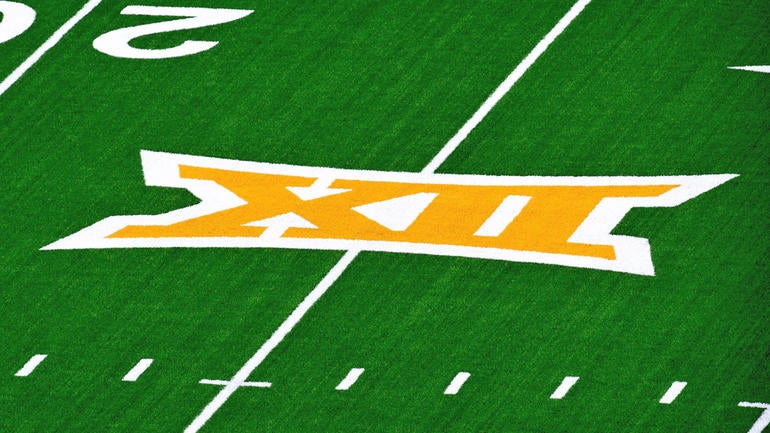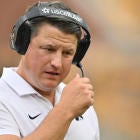
As the Southwest Conference was collapsing under the weight of its own scandal more than a quarter century ago, Oklahoma athletic director Donnie Duncan and Texas counterpart DeLoss Dodds had an idea: merge the Big Eight and choice SWC schools.
Apart, neither side had enough televisions in their orbit to remain a major conference. In finalizing the deal, Duncan and Dodds took their idea and pitched it to major advertisers in New York. Their pitch? A conference stretching down the middle of the country that encompassed 16% of the United States population could sell a lot of pickup trucks.
That's it. That was the pitch.
Surely mentioned in that high level meeting: Texas and Oklahoma would be together in a conference for the first time. The idea took hold because of that fact. Irony of ironies: The Big 12's existence is now in question because Texas and Oklahoma are departing.
The remaining eight teams are determined to stay together to the point one high-ranking source told CBS Sports that all options are on the table to salvage the Big 12. What could that include?
- Leveraging the American in potential discussions of one league taking teams from the other.
- Looking West for a potential merger with the Pac-12.
- Calling BYU or even Boise State to discuss their interest. (They were mentioned in 2016 during the Big 12's last expansion discussions.)
Geography doesn't seem to be a factor. Look no farther than West Virginia, which is almost 1,000 miles from its nearest Big 12 foe.
For now, the Big 12 seems committed to a long play as it holds Texas and Oklahoma to their remaining four-year commitments. By then, there might be widespread streaming availability that could open additional revenue streams.
Another option is the eight remaining Big 12 teams standing firm, together, in a weird cone of security. Industry analysts agree there are few, if any, available schools that bring value to the Big 12. Conversely, there are few Big 12 schools on their own that would bring value to other power conferences.
The Remaining Eight were described as nervous following the Texas-Oklahoma defection as one informed source described to CBS Sports. Nervous but optimistic that -- if they can stay together – they can collect as much money as possible from existing College Football Playoff and Big 12 media rights contracts in the upcoming four years.
That CFP money alone comes to $66 million per year for Power Five conferences. Semifinalists get $6 million. New Year's Six bowl appearances are worth $4 million per year. Assuming an Oklahoma playoff berth in 2021 with Iowa State going to a New Year's Six bowl, that's a possible haul of $76 million for the Big 12.
The bottom line for a reconstituted Big 12 is maintaining its Power Five designation whenever that comes up for discussion.
Industry sources tell CBS Sports that the Big 12 lost at least 50% of its value when the Longhorns and Sooners left. Big 12 schools currently receive approximately $37 million per year from ESPN, Fox, bowl games and the NCAA Tournament. That doesn't include Texas' Longhorn Network money and Oklahoma's regional network revenue.
Without Texas and Oklahoma, that $37 million goes down significantly. Is there a group of schools or a merger strategy that keeps the payout in the $15 million to $18 million range? While that would severely impact current Big 12 budgets, it's still a solid payday.
Back to that question of how commissioners will define the Power Five (or Power Four) for playoff revenue purposes.
Summing up the prospect of such discussions, TCU president Vic Boschini said, "Everything is better when you're in the Power Five … except parking."
That Power Five designation is what gives Big 12 its aforementioned leverage over the American. If we've learned anything in realignment, it's to follow the money. Despite its recent trauma, the Big 12 is operating from somewhat of a position of power when it comes to the AAC.
That could mean reconsideration of schools passed over by the Big 12 in 2016 to keep the conference whole. If you want favorites, think of Cincinnati, Houston and UCF.
Texas, Houston's biggest foe in expansion, is gone. In three of the last four years, either Cincinnati or UCF or both have finished ahead of Texas in the final AP Top 25. If that sounds like a brief snapshot, consider Texas is in the SEC despite finishing outside the top 25 in five of the last 10 years.
The SEC is buying a brand and all the eyeballs that go with it. UCF wants to be one of those brands. Before this round of realignment was kicked off by the 'Horns and Sooners, officials from UCF put together a 64-page presentation intended to sell the school's value to Power Five conferences.
In that presentation is some fairly interesting information.
- Orlando is the largest U.S. city without an NFL team.
- Forbes ranked Orlando the top-rated midsize college town ahead of Scottsdale, Arizona, and Gainesville, Florida.
- Florida is the No. 1 recruiting state in the nation. (Giving UCF credit for that isn't fair, and schools don't necessarily need UCF to recruit in Florida.)
- Orlando is the nation's 17th largest TV market.
AAC commissioner Mike Aresco summed up the tension between the two conferences this week at his league's media day. "If a conference isn't stable, then who knows what its future is," he said.
BYU was mentioned five years ago and could come into play again. The school has a brand and is coming off its best season in years. Any hope BYU had of joining the Big 12 in 2016 was probably ended when LGBTQ advocacy groups wrote commissioner Bob Bowlsby asking him not to consider the program. At the time, BYU vigorously defended itself.
For now, the Big 12 is trending toward a long exhale. It has time to consider its future. Texas and Oklahoma have publicly stated their intent to stay in the Big 12 for the final four years of the leagues media rights agreement.
Intent being the key word. If the two superpowers left early, they would owe the conference tens of millions of dollars because the Big 12 otherwise owns their TV rights until 2025. If they stay, it could get ugly on the fields and courts for the defectors, but insults thrown from the stands don't cost nearly as much as a prolonged legal battle.
If the Big 12 stands pat, it has time to decide whether to expand. The Pac-12 and AAC are still going to be there four years from now. That would leave room for a Pac-12 scheduling alliance to increase revenue. The two sides discussed such an arrangement following the Big 12's failed expansion foray in 2016.
A full-on 20 team Big 12-Pac-12 merger would rock the collegiate world. Again, forget geography. Think of four scheduling pods of five to create travel partners.
1: California, Oregon, Oregon State, Washington, Washington State
2: Colorado, Stanford, UCLA, USC, Utah
3: Arizona, Arizona State, Baylor, TCU, Texas Tech
4: Iowa State, Kansas, Kansas State, Oklahoma State, West Virginia
Everyone is waiting for streaming. The tech giants haven't fully jumped in … yet. Plus, streaming requires bandwidth. That makes a difference in underserved areas like Morgantown, West Virginia, or western Kansas. Both the Pac-12 and Big 12 are banking on those issues being resolved nationally in four years when their current media rights deals will be up.
For now, we are watching a major conference battle for relevance in real time. It last happened a decade ago with -- surprise! -- the Big 12. At that point, following the departures of Nebraska, Colorado (and later Texas A&M and Missouri), ESPN stepped in and paid the league as much for the 10 remaining teams as it would have for 12.
That needs to be remembered in any slicing and dicing of ESPN in the latest process. The Big 12 owes its past to Duncan and Dodds. But it wouldn't be around today if not for ESPN's largess a decade ago.





















